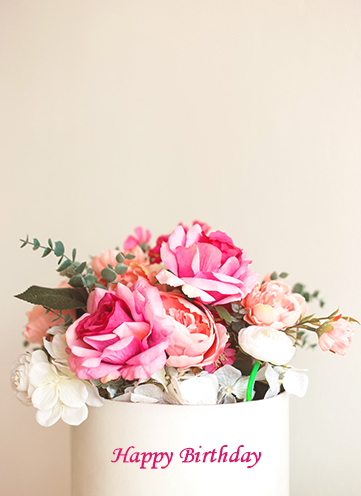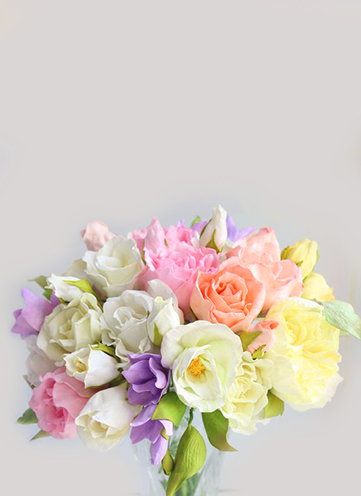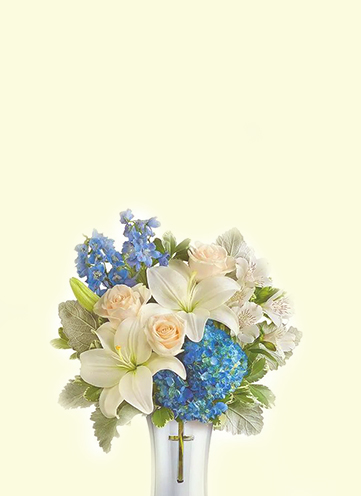Let the Colors and Scents of Flowers Brighten Your Mood and Well-Being
Posted on 21/05/2025
Let the Colors and Scents of Flowers Brighten Your Mood and Well-Being
Flowers have captivated human beings for centuries, not only for their alluring beauty but for their powerful impact on our emotions, mental health, and overall well-being. In today's fast-paced, often stressful world, the simple act of appreciating the colors and scents of flowers can bring a sense of tranquility, happiness, and rejuvenation. In this comprehensive guide, we will explore the fascinating ways that flowers can uplift your mood, enrich your environment, and contribute to a healthier, more joyful life. Uncover how to integrate these radiant wonders into your daily routine for enhanced well-being and vibrant living.
The Science Behind Flower Colors and Mood Enhancement
Color shapes our emotions and perceptions more than we realize. The vivid hues of blossoms--from bold reds to gentle lavenders--can ignite a range of positive feelings. Scientists refer to this as chromotherapy, or color therapy. The practice of using colors to affect mental and physical states has roots in ancient traditions and modern psychology alike.
- Red: Ignites energy and passion; known to stimulate excitement and motivation.
- Yellow: Associated with happiness, warmth, and optimism; sunflowers and daffodils are prime examples.
- Blue: Encourages calmness and serenity; bluebells and hydrangeas promote peacefulness.
- Purple: Linked to creativity and inspiration; lavender and irises spark imagination.
- White: Symbolizes purity and new beginnings; lilies and jasmine radiate simplicity and clarity.
The impact of flower colors isn't just psychological--it's physiological. Studies show that encountering brightly colored flowers can prompt the brain to release endorphins and serotonin, key hormones in managing mood and stress. That's why even a small bouquet on your desk can have a significant positive effect on your daily energy and outlook.

The Aromatic Influence: Scents of Flowers and Emotional Well-Being
Beyond visual allure, the soothing scents of blossoms play a vital role in mental wellness. The term aromatherapy refers to the use of natural plant extracts, especially floral scents, to promote health and well-being.
Here's how certain floral fragrances can transform your mood and mind:
- Lavender: Renowned for its relaxing and anxiety-reducing properties. Just a whiff can calm nerves and encourage restful sleep.
- Rose: Symbolizes love and relaxation. Its sweet aroma may reduce stress hormones and foster a feeling of self-worth.
- Jasmine: Lifts depression, stimulates energy, and may even increase alertness.
- Gardenia: Helps ease tension and brings a sense of harmony.
- Chamomile: Often used to induce relaxation and soothe the senses.
Numerous scientific studies support the beneficial impact of flower scents on emotional balance. Inhaling the fragrance of certain blooms can lower anxiety, reduce heart rate, and even boost cognitive performance. This effect is linked to the olfactory system's close connection with the brain's limbic region, which regulates emotions and memory.
Flowers and Mental Health: The Psychological Power of Blossoms
Interacting with flowers--whether through arranging a bouquet, tending to a garden, or simply inhaling their aroma--offers measurable advantages for your psychological health. Here's how integrating more flower energy into your life can spark significant well-being benefits:
Reducing Anxiety and Stress
Scientific research has found that people surrounded by flowers report less stress and increased feelings of peace and happiness. Even in high-pressure environments such as offices or hospitals, floral arrangements can reduce tension, lower blood pressure, and contribute to faster recovery rates.
Increasing Happiness and Satisfaction
The act of receiving flowers, or even merely seeing them, produces an immediate and sustained boost in mood. Flowers are proven to trigger positive social behavior, encourage compassion, and strengthen emotional bonds among people.
Enhancing Focus and Productivity
Bright and cheerful blooms in workspaces have been linked to improved creativity, sharper concentration, and higher productivity. Incorporating flower scents can also decrease fatigue and the dreaded afternoon slump.
Supporting Mindfulness and Relaxation
Flowers naturally draw our attention to the present, making them a perfect tool for mindfulness practices. Observing, smelling, or gently touching petals invites us to slow down, breathe deeply, and appreciate the moment--a valuable antidote to modern distractions and anxieties.
Creative Ways to Integrate More Flower Power Into Your Life
Letting the colors and scents of flowers uplift your environment and your spirit doesn't require a green thumb or lavish gardens. Here are practical, inspiring ways to incorporate more floral joy into your everyday routine:
1. Keep Fresh Bouquets in Your Space
- Display seasonal flowers in your home or workplace for a rotating dose of color and scent.
- Experiment with arrangements based on your favorite colors and fragrances.
- Even a small vase on your windowsill can have a big impact.
2. Create a Miniature Flower Garden
- Use pots or balcony planters to grow vibrant flowers like pansies, petunias, and marigolds.
- Choose blooms not only for appearance, but for long-lasting fragrance too.
3. Try Pressed Flower Art
- Preserve and display petals for a year-round reminder of nature's magic.
- Use pressed flowers in journals, greeting cards, or framed wall art.
4. Harness Flower Scents with Essential Oils
- Diffuse lavender, rose, or geranium essential oils at home or during meditation.
- Add a few drops of essential oil to your bath for relaxation and stress relief.
5. Practice Flower-Based Mindfulness
- Spend a few minutes daily with a favorite flower--notice its structure, inhale the aroma, and observe its color.
- Let your mind settle and enjoy the moment.
6. Gift Flowers to Others
- Brighten someone else's mood by sharing the wellness benefits of flowers.
- Personalized bouquets show care, comfort, and optimism--perfect for strengthening relationships.
Popular Flower Choices for Mood and Well-Being Boosts
Not all blooms are created equal when it comes to enhancing happiness and health. Here are some of the most mood-boosting flowers and the best ways to make the most of their beauty and fragrance:
- Sunflowers: Radiate joy and positivity with their sunny yellow petals.
- Peonies: Symbolize romance, good fortune, and peace of mind.
- Lilies: Known for their elegant look and soothing scent.
- Lavender: A stress-busting favorite that calms both mind and body.
- Jasmine: Invigorates senses and adds a touch of exotic luxury.
- Gerberas: Bold and brightly colored, these daisies promote cheerfulness.
- Roses: Classic mood enhancers known for beauty and fragrance.
- Orchids: Bring a sense of tranquility and are easy to care for indoors.
Flowers as Part of a Holistic Approach to Well-Being
While flowers are powerful on their own, they offer even greater mental and emotional benefits when incorporated into a holistic lifestyle. Here are some tips for seamlessly blending floral colors and scents into your journey towards better health:
- Combine floral aromatherapy with meditation or yoga for enhanced relaxation.
- Pair mindful gardening with regular exercise to boost both mood and physical health.
- Infuse herbal teas (such as chamomile or hibiscus) for inner calm.
- Use flower-based skincare for gentle self-pampering and radiant skin.
- Journal about your experiences with different blossoms to cultivate gratitude and presence.

Common Questions About Flower Therapy for Mood and Well-Being
Q: Can flowers really help with mental health issues like anxiety or depression?
Absolutely. While flowers are not a substitute for professional help, their colors and scents have been shown to reduce symptoms of stress, support emotional regulation, and increase feel-good brain chemicals. Integrating fresh blossoms into your environment can be a meaningful and accessible step towards managing mild anxiety and fostering mental wellness.
Q: What if I'm allergic to flowers?
If allergies are a concern, opt for low-pollen varieties such as orchids, hydrangeas, or succulents. Essential oils derived from flowers are another excellent alternative, as they often contain fewer allergens while still providing aroma-therapeutic benefits.
Q: Do artificial flowers have the same effect?
While artificial flowers can visually brighten a space, they lack the natural scent and biological energy of real blooms. For the fullest benefit to mood and well-being, prioritize fresh flowers whenever possible--but silk blossoms can still elevate the ambiance of your environment.
Q: How often should I replace or rotate the flowers in my home?
For ongoing benefits, aim to refresh your floral displays weekly, swapping in seasonal varieties and different colors/scents to keep your mood and surroundings vibrant. Pay attention to your personal emotional needs; sometimes a single favorite flower provides all the uplift you need.
The Lasting Impact: Let Flowers Brighten Your Life
In times of stress or simply for joy, letting the colors and scents of flowers fill your daily life can be a surprisingly powerful tool for enhanced well-being. Whether you indulge in bouquets, savor the aroma of essential oils, tend a windowsill garden, or simply pause to appreciate the wildflowers on your walk, you're harnessing the therapeutic magic of nature.
Cultivating a close relationship with flowers isn't just about beauty--it's about investing in your happiness, health, and peace of mind. So next time you want to elevate your mood or transform your space, let the vibrant colors and soothing scents of blooms brighten your world.
Let flowers be more than decoration. Let them be a daily renewal for your mood, your senses, and your spirit.
```Latest Posts
Plant These 12 Flowers for a Durable Floral Arrangement
How to Keep Your Poinsettias Fresh for Holidays
Unearthing Tulip Treasures: 7 Surprising Facts to Discover
3 Creative Ideas to Maintain Flower Freshness
Discover 8 Astonishing Things You Never Knew About Sunflowers





